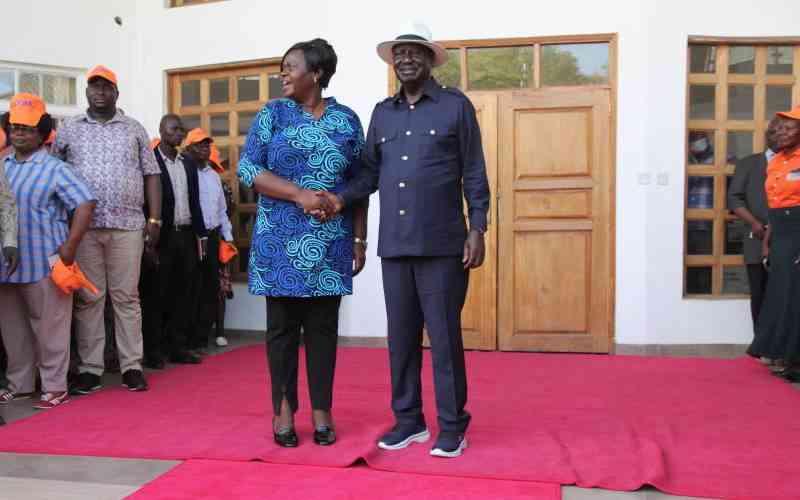National Shrine of the Immaculate Conception Launches Specialized Tours for Deaf and Blind Visitors Now - Travel And Tour World
Saturday, June 28, 2025

The Basilica of the National Shrine of the Immaculate Conception in Washington, D.C., has launched an innovative initiative to make the sacred space more accessible to all. The shrine now offers specialized guided tours for deaf and blind visitors, providing sensory-rich experiences that allow these individuals to connect more deeply with the history, art, and spirituality of the basilica. The Deaf and Blind Tour Initiative, which began in April, is a first of its kind in the U.S. and aims to provide an immersive experience to those often underserved by religious institutions and cultural sites.
The new tours include American Sign Language (ASL)-interpreted guides for deaf visitors and tactile stations for blind visitors. These efforts enable participants to engage with the basilica’s statues, mosaics, and sacred art through touch and sight, enhancing their overall experience. Monsignor Vito Buonanno, the director of pilgrimages for the shrine, shared that the project is designed to make the sacred space more welcoming and inclusive.
“The Deaf and Blind communities are often underserved in museums and church settings,” Buonanno said. “These tours are our way of welcoming them in a meaningful and respectful way.”
The concept of the Deaf and Blind Tour Initiative took shape in 2021 when volunteer docent Marilyn Lasecki began researching how to make the basilica more accessible to those with sensory impairments. During her research, Lasecki discovered that the Vatican Museums were already offering similar accommodations for deaf and blind visitors, providing a model for the shrine’s efforts.
Inspired by this, Lasecki partnered with ASL interpreter Katy Betker and Monsignor Walter Rossi, the rector of the shrine, to bring the idea to life. Lasecki, who wanted to honor her late father Leonard, a man who had worked with the deaf community, began working toward creating a program that would allow deaf and blind visitors to experience the basilica more inclusively.
Lasecki’s research, which took her to the Vatican, also led to a collaboration with Dee Steel, the director of the basilica’s Office of Visitor Services. Steel traveled to Rome to study the Vatican’s tactile systems firsthand and gather ideas for implementing similar features at the National Shrine.
For deaf visitors, the tours feature ASL interpreters who work alongside volunteer docents to guide groups through the basilica. Betker, the ASL interpreter, helped adapt the docent scripts to ensure they are more suited to the structure and grammar of American Sign Language.
“There is not a word-for-word translation between English and ASL,” Betker explained. “We have to adjust the scripts to ensure that they reflect the ASL structure, which is different from English in terms of word order and expression.”
The tour guides also make subtle adjustments to improve communication. For example, they wait for deaf participants to finish observing a site before continuing with their commentary, allowing for a more seamless and engaging experience.
Father Michael Depcik, a deaf priest and chaplain from the Archdiocese of Baltimore, was part of one of the early tours. He emphasized that having direct communication in ASL allows deaf Catholics to fully immerse themselves in the liturgy and the overall experience.
“Usually, deaf individuals would rely on an interpreter, but it’s not the same,” Depcik said. “Now, they can connect directly with the experience in a way they never could before.”
For blind visitors, the basilica has created tactile experiences that allow them to engage with sacred art and architecture in a meaningful way. Father Mike Joly, a blind priest from St. Joan of Arc Parish in Yorktown, Virginia, helped guide the development of the tactile tours. The experience includes 15 hands-on stations throughout the basilica, including the Founder’s Chapel and the Our Mother of Africa statue.
One of the first tactile stations visitors encounter is a scale model of the basilica created from more than 10,000 Lego bricks. This model is located on the crypt level and helps blind visitors visualize the layout of the basilica and its impressive structure. The basilica has also added tactile versions of sacred artwork, including sculptures of the Blessed Mother and Christ, as well as the faces of the four Evangelists, which visitors can touch.
Joly played a key role in developing the tour’s tactile elements. During his visit to the Founder’s Chapel, Joly was allowed to explore a marble sarcophagus by touch, which revealed intricate details that he had never fully appreciated before.
Joly’s insights have been invaluable to the development of the tactile stations. For example, he reinterpreted the artwork in the Our Mother of Africa chapel by feeling the figure of Jesus, and he noticed that instead of pointing toward another artwork, Jesus was giving a blessing.
“It’s amazing what you can learn by feeling,” said Steel. “Father Mike taught us to see more with our hands than we had ever seen with our eyes.”
Now that the tours are underway, the National Shrine hopes to raise awareness and expand participation in this initiative. Monsignor Buonanno shared that the basilica is committed to making these tours known to as many people as possible to ensure that more individuals in the deaf and blind communities can benefit from this unique experience.
“We want people to know that these tours exist and that everyone is welcome,” Buonanno said. “It’s important that we continue to open our doors and provide meaningful experiences for all people, regardless of their abilities.”
With these sensory-rich tours, the Basilica of the National Shrine of the Immaculate Conception is setting a new standard for accessibility in religious and cultural spaces. By offering these specialized experiences, the basilica ensures that everyone, regardless of ability, can experience the beauty, spirituality, and history of one of the nation’s most iconic religious landmarks.
(Source: Basilica of the National Shrine of the Immaculate Conception, U.S. Government, Monsignor Vito Buonanno, Father Mike Joly.)
«Enjoyed this post? Never miss out on future posts by following us»










